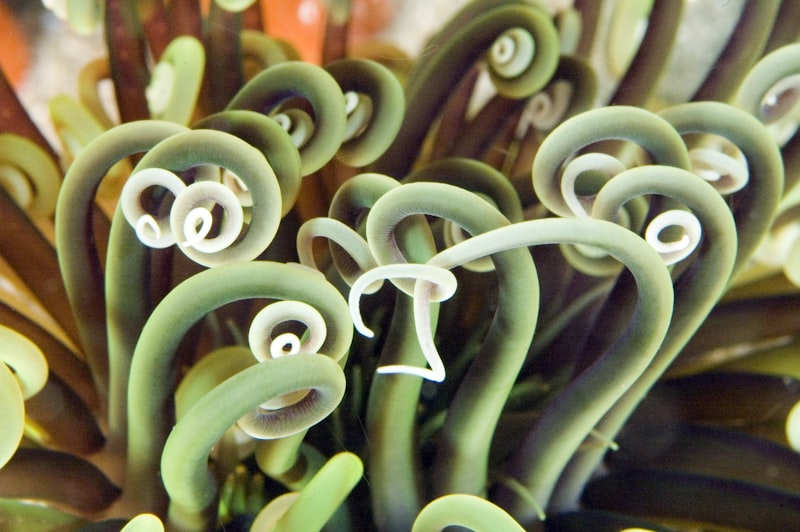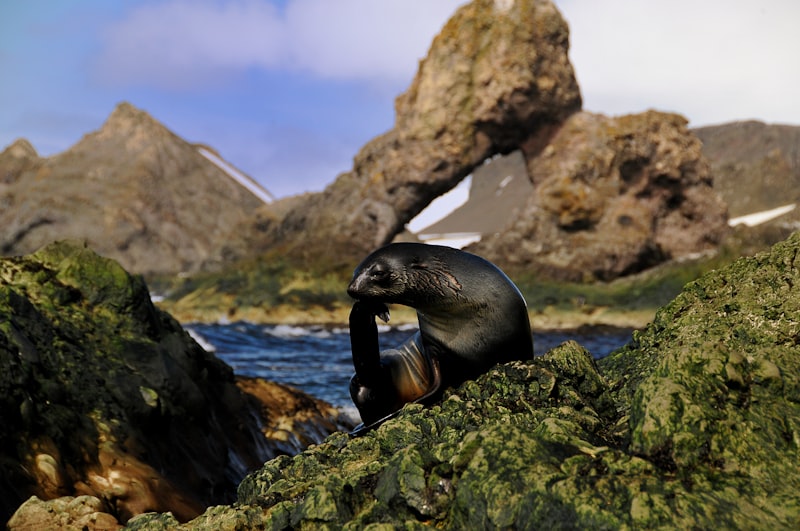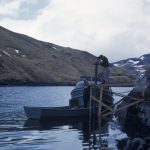Have you ever wondered about the impact of our daily activities on our oceans? Marine pollution is a critical issue that affects the health of our marine ecosystems worldwide. Understanding its sources and exploring effective solutions is crucial in safeguarding our oceans for future generations.
Firstly, let’s delve into the sources of marine pollution. One of the primary culprits is plastic waste. Each year, millions of tons of plastic find their way into the ocean, endangering marine life and ecosystems. From single-use plastics to abandoned fishing nets, these items persist for decades, wreaking havoc on underwater habitats.
Another significant source is chemical pollutants. Industrial discharges, agricultural runoff, and untreated sewage all contribute to the contamination of our oceans. These chemicals can accumulate in marine organisms, posing risks to both wildlife and humans who rely on seafood as a food source.
But it’s not just solid waste and chemicals that threaten our oceans. Oil spills, whether large-scale disasters or small leaks from ships and offshore drilling, have devastating effects on marine environments. The slicks can coat seabirds and mammals, impairing their ability to regulate body temperature and causing widespread ecological damage.
Now, let’s shift our focus to solutions. Addressing marine pollution requires a multifaceted approach. One effective strategy is the implementation of strict regulations and policies. Governments and international bodies play a crucial role in enforcing laws that limit plastic production, regulate waste disposal, and promote sustainable practices.
Additionally, raising public awareness is key to combating marine pollution. Educating communities about the consequences of their actions can lead to changes in behavior, such as reducing plastic use and participating in beach clean-ups. Every small action counts towards preserving our oceans.
Technological innovation also offers hope. Researchers are developing advanced methods to clean up oceanic garbage patches and mitigate the impact of pollutants. From automated trash-collecting systems to biodegradable materials, these innovations show promise in reducing marine debris and restoring marine ecosystems.
Tackling marine pollution requires a collective effort from individuals, industries, and governments worldwide. By understanding its sources, implementing effective solutions, and embracing innovation, we can work towards a cleaner and healthier ocean environment for future generations to enjoy. Together, we can make a profound difference in safeguarding our precious marine ecosystems.
Unveiling the Hidden Threat: The Origins of Marine Pollution
One of the primary sources of marine pollution is land-based activities. Runoff from urban areas, agricultural fields, and industrial sites carries pollutants such as plastics, chemicals, and heavy metals into rivers and streams that eventually flow into the sea. These pollutants can have devastating effects on marine habitats and organisms, impacting everything from coral reefs to fish populations.
Another major contributor to marine pollution is shipping and maritime activities. Oil spills, accidental discharge of chemicals, and even routine vessel operations contribute to the contamination of marine environments. These incidents not only harm marine life directly but also degrade water quality and disrupt marine ecosystems.
Plastic pollution is a particularly pervasive form of marine pollution. Millions of tons of plastic waste enter the oceans each year, endangering marine species through ingestion and entanglement. The durability of plastics means that even small fragments can persist in the environment for decades, causing long-term harm to marine ecosystems.

Pollution from fishing activities also plays a role, with discarded fishing gear such as nets and lines known as “ghost gear” continuing to trap and kill marine life long after it’s been abandoned.
The impacts of marine pollution extend beyond ecological damage. Coastal communities that depend on marine resources for food and livelihoods suffer economic losses, while tourism and recreation industries also feel the effects of degraded marine environments.
Addressing marine pollution requires concerted efforts on local, national, and international levels. Strategies include improving waste management practices, promoting sustainable fishing methods, and enforcing regulations to reduce pollution from shipping and industry.
By raising awareness of the origins and consequences of marine pollution, we can work towards protecting our oceans and ensuring a sustainable future for marine life and human communities alike.
From Ship to Shore: How Shipping Contributes to Ocean Pollution
One of the primary contributors to ocean pollution from shipping is ballast water. Ships take on ballast water to maintain stability, often from one port and discharge it in another. This transfer of water introduces invasive species, disrupting marine ecosystems and native species.
Moreover, the engines of these vessels burn heavy fuel oil, emitting sulfur oxides, nitrogen oxides, and particulate matter. These pollutants not only degrade air quality but also contribute to acid rain and smog formation. The International Maritime Organization (IMO) has introduced regulations to limit sulfur emissions, mandating the use of low-sulfur fuels or exhaust gas cleaning systems (scrubbers).
Accidental spills of oil and hazardous chemicals further exacerbate the problem. Despite stringent safety measures, spills still occur, impacting marine life and coastal communities. The Exxon Valdez and Deepwater Horizon disasters serve as stark reminders of the devastating consequences of such incidents.
Beyond direct pollutants, shipping also generates noise pollution underwater, affecting marine mammals like whales and dolphins, which rely on sound for communication and navigation. The constant hum of engines and propellers can disrupt their natural behaviors, potentially leading to long-term ecological impacts.

Addressing these challenges requires a concerted effort from governments, industry stakeholders, and environmental advocates. Innovations in ship design, propulsion technology, and fuel alternatives show promise in reducing the ecological footprint of shipping. From cleaner fuels to hull coatings that minimize drag and fuel consumption, ongoing research aims to mitigate the industry’s environmental impact.
Plastic Peril: Tackling the Tide of Marine Debris
Plastic pollution in our oceans has reached alarming levels, posing a severe threat to marine life and ecosystems worldwide. Imagine this: every minute, the equivalent of one garbage truck of plastic enters the ocean. That’s a staggering 8 million tons of plastic each year, wreaking havoc on marine habitats and species.
What makes plastic such a peril? Unlike natural materials, plastic doesn’t biodegrade; it breaks down into smaller pieces known as microplastics, which persist in the environment for hundreds of years. Marine creatures mistake these microplastics for food, leading to a cascade of harmful effects throughout the food chain. From tiny zooplankton to majestic whales, no marine organism is spared from the impact of plastic pollution.
But there is hope on the horizon. Governments, environmental organizations, and concerned citizens are joining forces to combat this crisis. Policies are being implemented to reduce plastic production, promote recycling, and enforce stricter regulations on plastic waste management. Innovative technologies are emerging to clean up our oceans and rivers, capturing plastic debris before it reaches the sea.
Individual actions also play a crucial role in tackling marine debris. Simple changes in our daily lives, such as reducing single-use plastic consumption, opting for reusable alternatives, and participating in beach clean-ups, can collectively make a significant difference. By making conscious choices, we can stem the tide of plastic pollution and safeguard our oceans for future generations.
Beyond Oil Spills: Lesser-Known Causes of Marine Pollution
Marine pollution is a pressing issue that extends far beyond the widely publicized oil spills. While catastrophic spills grab headlines, there are numerous lesser-known sources of marine pollution that also pose significant threats to our oceans and marine life.
One often-overlooked source is agricultural runoff. Pesticides, herbicides, and fertilizers used in farming find their way into water bodies through runoff, leading to harmful algal blooms and oxygen depletion in marine ecosystems. These chemicals disrupt the balance of marine life, affecting everything from tiny plankton to larger fish species.
Another major contributor is plastic pollution. Single-use plastics like bottles, bags, and straws are pervasive in our society, but their disposal often ends in waterways. Plastics break down into microplastics, which are ingested by marine organisms, causing internal damage and potentially entering the food chain, posing health risks to animals and humans alike.
Industrial activities also play a significant role. Chemical pollutants from factories and manufacturing plants are discharged into rivers and oceans, contaminating water and impacting marine biodiversity. Heavy metals, toxic substances, and even radioactive materials can persist in the environment for decades, affecting ecosystems far beyond their original discharge point.
Even everyday activities like improper waste disposal and sewage discharge contribute to marine pollution. Sewage contains nutrients that can cause harmful algal blooms, while untreated waste introduces pathogens and contaminants into marine environments.
Furthermore, shipping and maritime transport contribute to marine pollution through ballast water discharge, oil spills from vessels, and even noise pollution that disrupts marine mammal communication and behavior.
Addressing these lesser-known causes of marine pollution requires a multifaceted approach, including stricter regulations, sustainable agricultural practices, improved waste management, and global cooperation to protect our oceans and marine life for future generations.
Invisible Invaders: The Impact of Microplastics on Marine Life
You might think the ocean is vast and endless, but lurking beneath its surface are invisible threats that pose a significant danger to marine life: microplastics. These tiny pieces of plastic, often invisible to the naked eye, are causing a monumental stir in the delicate balance of our oceans.
Imagine you’re a tiny fish swimming in the vast ocean, looking for food to sustain yourself. You come across what appears to be a minuscule speck of food, only to realize too late that it’s a microplastic particle. This scenario plays out countless times across the oceans, affecting creatures big and small.
Microplastics enter marine environments through various routes, including from larger plastic debris that breaks down over time and from microbeads used in cosmetics and personal care products. Once in the water, they’re consumed by marine organisms ranging from plankton to whales, infiltrating the entire food chain.
The impact of microplastics on marine life is profound and multifaceted. These particles can cause physical harm by blocking digestive tracts or causing internal injuries when ingested by marine animals. Moreover, they can act as magnets for toxic chemicals present in seawater, accumulating these pollutants and potentially transferring them up the food chain to humans who consume seafood.
Consider the ripple effect of a single piece of microplastic. It could be mistaken for food by a sea turtle, filling its stomach and preventing it from consuming actual food, leading to malnutrition and even death. Multiply this by millions of marine animals affected worldwide, and the scale of the problem becomes daunting.
Efforts to mitigate the impact of microplastics involve a combination of scientific research, policy changes, and public awareness. Researchers are studying the pathways and effects of microplastics to better understand their implications. Governments and organizations are implementing regulations to limit plastic pollution and encourage recycling.
As individuals, we can also make a difference. Simple changes in our daily lives, such as reducing single-use plastics and supporting initiatives for clean oceans, contribute to the larger effort of protecting marine life from these invisible invaders.
The issue of microplastics in our oceans is not just a concern for marine biologists or environmentalists; it’s a shared responsibility for all of us who depend on the health of our oceans for survival. Together, we can work towards cleaner waters and a safer future for marine ecosystems and the countless species that call the ocean home.
Blue Solutions: Innovations in Cleaning Up Our Oceans
Have you ever wondered about the state of our oceans? With pollution becoming an increasingly pressing issue, innovators around the globe are stepping up to tackle this challenge head-on. Enter “Blue Solutions” — a groundbreaking initiative that aims to revolutionize ocean cleanup efforts through cutting-edge technologies and sustainable practices.
Picture this: vast nets that sift through the ocean waters, collecting debris while allowing marine life to thrive undisturbed. These are not just dreams but real innovations being tested and deployed today. One such technology involves autonomous drones equipped with sensors that detect and collect floating trash, all while being remotely operated from the shore. This method not only cleans up our seas but also reduces the carbon footprint associated with traditional cleanup efforts.
But it doesn’t stop there. Innovators are thinking beyond cleanup to prevention. Imagine a biodegradable packaging revolution that eliminates plastic waste at its source, ensuring that our oceans remain pristine for generations to come. These solutions aren’t just about cleaning up the mess we’ve made; they’re about redefining how we interact with our environment.
The impact of Blue Solutions extends far beyond the surface. By removing tons of plastic and other pollutants from our oceans, these innovations protect marine ecosystems and safeguard the livelihoods of coastal communities that depend on healthy seas for their survival. It’s a ripple effect of positive change, starting from the seabed up to the skies.
Blue Solutions isn’t just a collection of technologies; it’s a movement towards a cleaner, more sustainable future. As we continue to face the challenges of environmental degradation, these innovations remind us that human ingenuity can be a force for good. Together, we can turn the tide on ocean pollution and ensure that our blue planet remains vibrant and resilient for generations to come.
Frequently Asked Questions
How does plastic pollution affect marine ecosystems?
Learn about the impact of plastic pollution on marine ecosystems, including how it harms marine life through ingestion and entanglement, disrupts habitats, and introduces toxins into the food chain.
What are the primary sources of marine pollution?
Learn about the main sources of marine pollution, including industrial discharges, plastic waste, oil spills, and untreated sewage. Understand how these sources impact marine ecosystems and what measures are being taken to mitigate their effects.
How can individuals help prevent marine pollution?
Learn effective ways individuals can contribute to preventing marine pollution through simple everyday actions and responsible waste management.
What measures can be taken to reduce marine pollution?
Learn effective measures to reduce marine pollution with our concise guide. Discover actionable steps such as reducing plastic use, supporting coastal clean-ups, and advocating for sustainable fishing practices.
What are the effects of oil spills on marine life?
Learn about the impact of oil spills on marine life, including effects on ecosystems, wildlife mortality, and long-term environmental damage.


